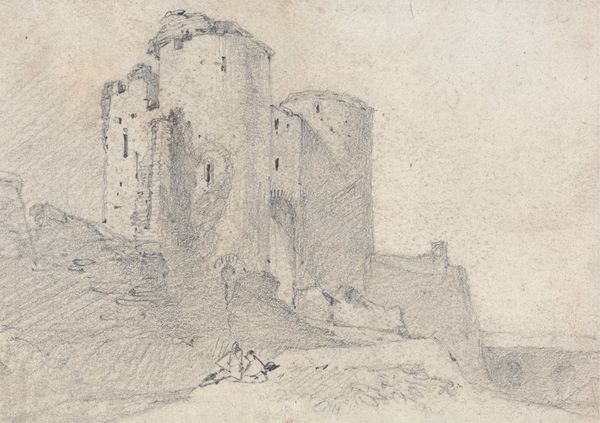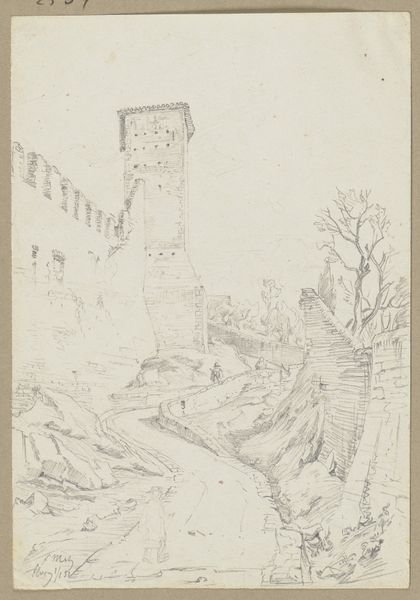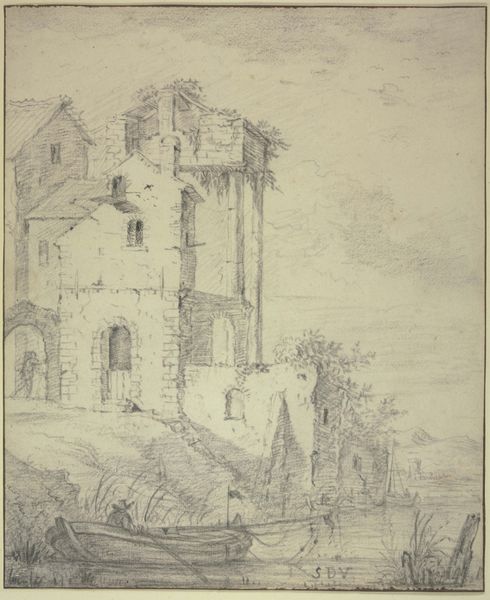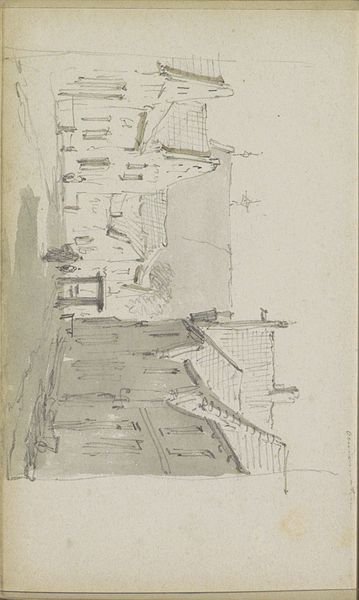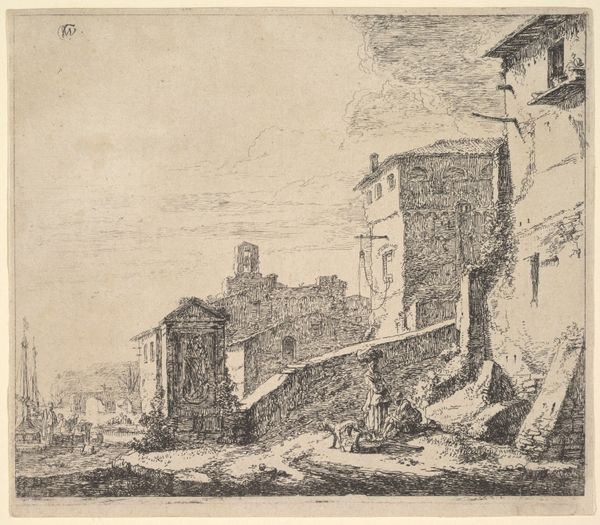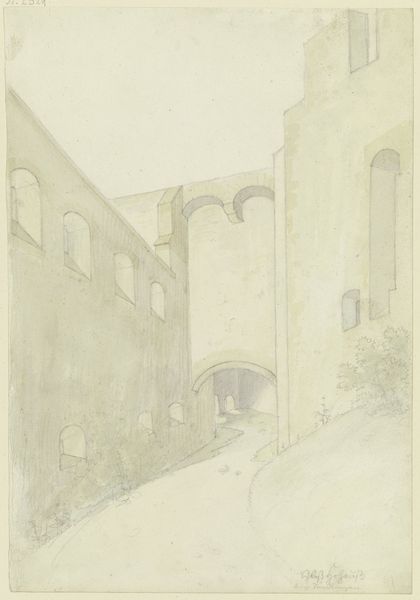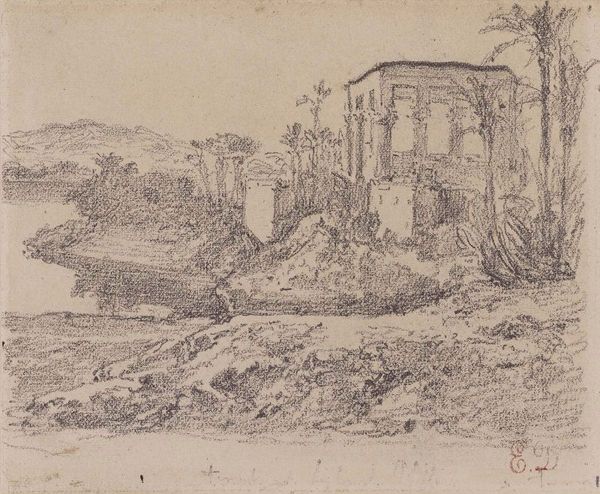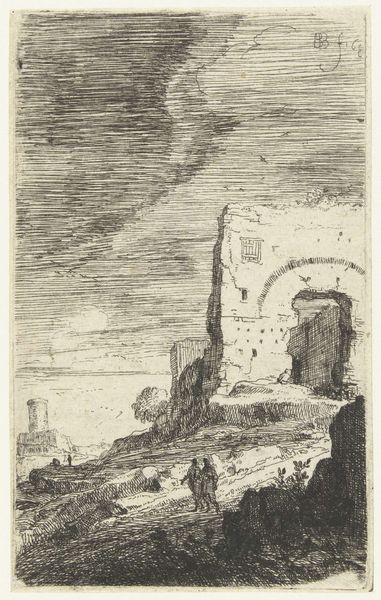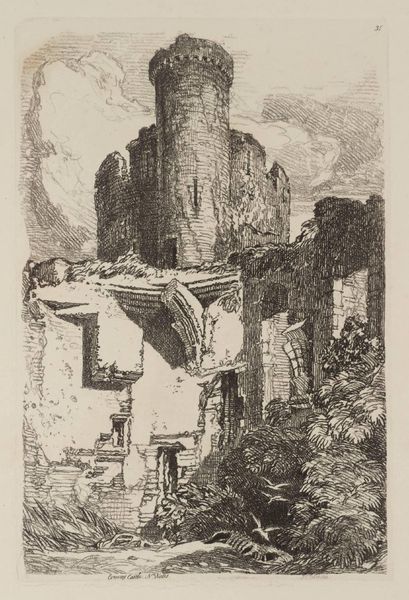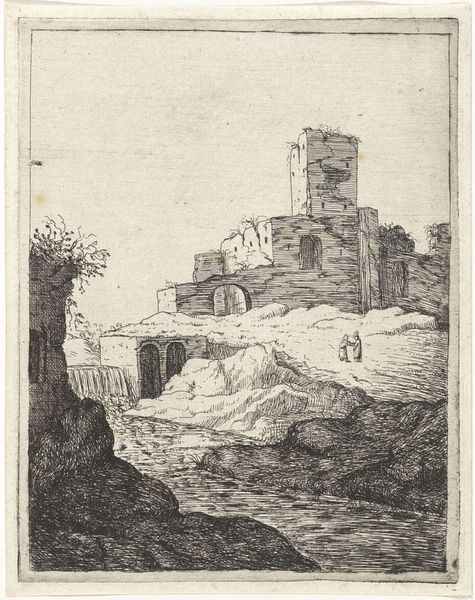
drawing, pencil
#
drawing
#
landscape
#
charcoal drawing
#
pencil
#
cityscape
#
realism
Copyright: Public Domain: Artvee
Curator: Here we have Elihu Vedder's "Orvieto," a drawing from around 1890, rendered in pencil and charcoal. What's your first take? Editor: Well, I’m immediately struck by the almost ghostly quality. It's like seeing a memory of a city rather than the city itself, all muted tones and hazy outlines. It evokes a certain kind of romantic longing, doesn’t it? Curator: It does, doesn’t it? There's this layering effect from the materials that feels incredibly intimate. Think about what Vedder chooses to capture – a hilltop city known for its ancient roots. Those looming walls, the suggestion of a fortified entrance. It speaks of endurance. Editor: Exactly! And notice how that tower kind of dominates the composition, receding into the sky… it reads like a phallic symbol of power and patriarchal societies—or perhaps the bridge from human world to God or to the Cosmos Curator: Now, that’s an interesting reading. You're reminding me that during Vedder's time, Orvieto and places like it were symbols of a classical past, offering a kind of refuge from industrializing modernity. I imagine he felt a connection between the architecture of antiquity, and the values of a long-lost culture. Editor: Perhaps it's even the promise of permanence itself. These enduring structures are laden with so much past—triumphs, losses—that makes the transience of the present feel almost bearable by comparison. Curator: I hadn’t thought of it like that, but now that you mention it… maybe that’s the allure for so many of us when we look at these historical images, whether landscape or cityscape? It's not just the view, but the echoing of time itself. Editor: A visual echo, precisely. It makes me wonder about all that the artist left out. This selective focus becomes its own language. This particular vision, heavy with implication. The city becomes a symbol itself. Curator: It certainly invites deeper thought. For Vedder, this landscape was not just a picture—he engaged a deep cultural and even emotional memory. It’s like he whispered this drawing into existence. Editor: Yes, a soft, compelling whisper from the past, indeed!
Comments
No comments
Be the first to comment and join the conversation on the ultimate creative platform.
